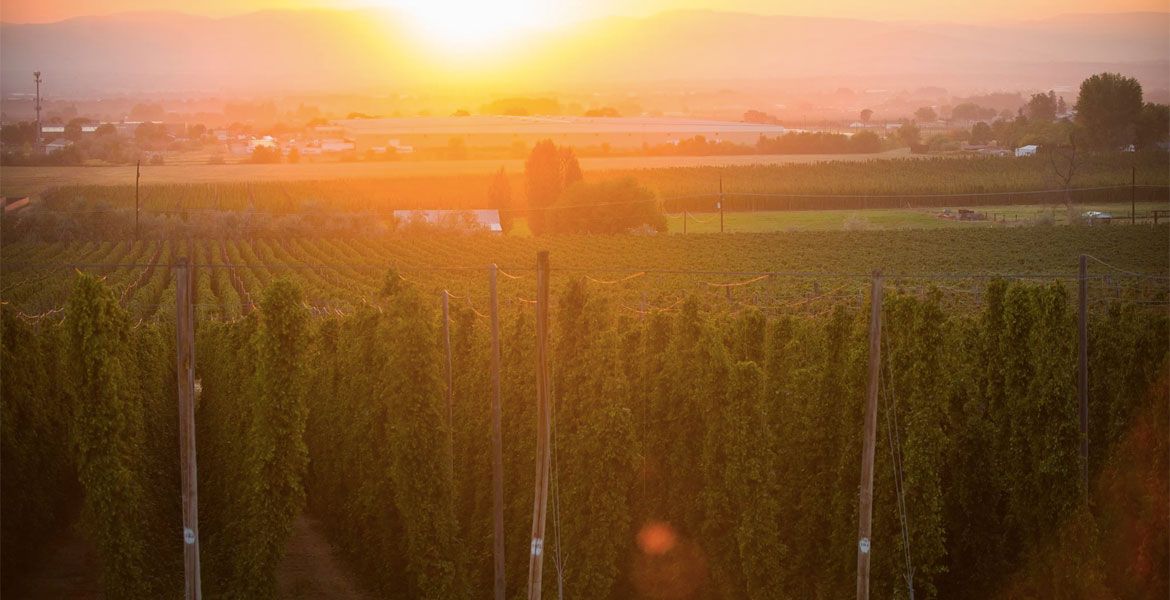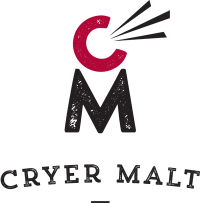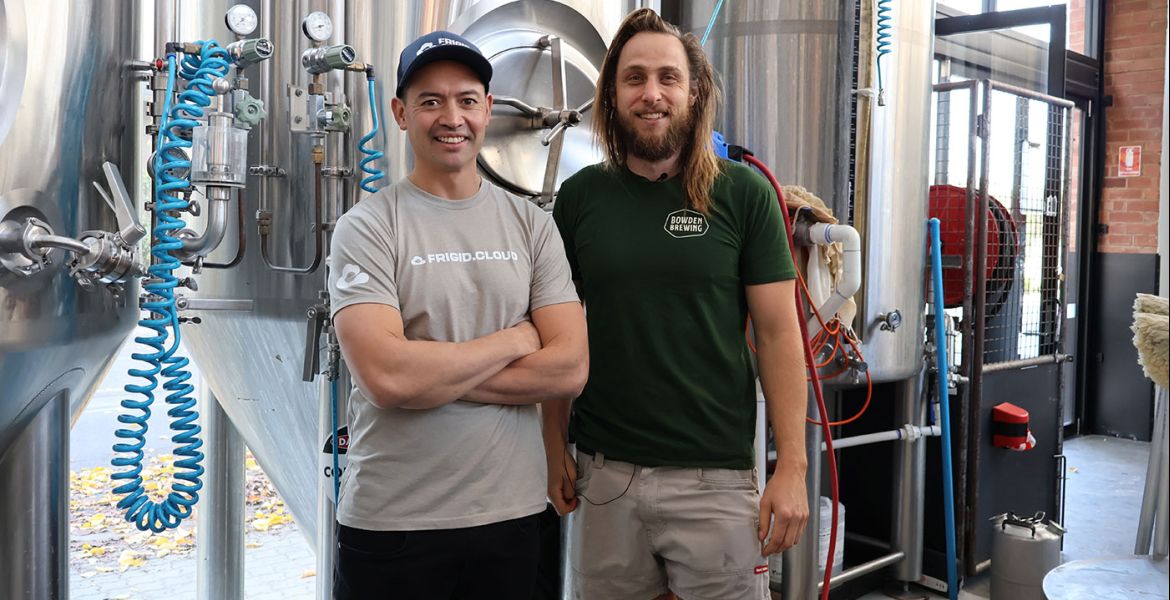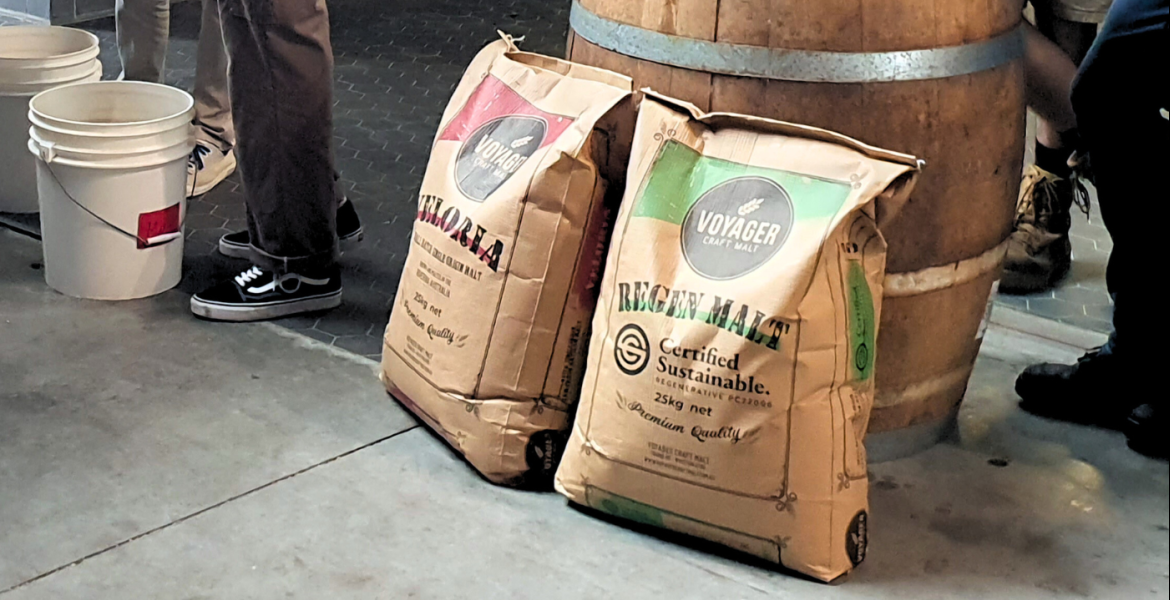For many, hops are the darlings of the craft beer world. Drinkers are seemingly always on the hunt for more hop-forward styles and brewers are constantly looking for new varieties to throw into their beers.
It means if you’re a hop scientist at a brewers’ conference, you’re one of the cool kids. Dr Tom Shellhammer, the Nor’Wester Professor of Fermentation Science at Oregon State University, is a leading researcher into hop chemistry and is, therefore, a very cool kid.
“I feel really fortunate,” Tom says when we meet at the Fresh Hop Beer Festival in Launceston. “When I go to brewery meetings there isn’t as much excitement about malt or yeast. I mean people are interested in them and so am I, but when you start talking about hops brewers light up and consumers light up.”
With a father working as a field biologist and an art historian mother, he says combining art and science through fermentation and brewing was always a likely path. In his early career, he focused on wine and food research before moving to Oregon State University to study fermentation and hops.
“Years later and that’s all I do,” Tom says. “Hop related research. But there’s a big element of serendipity there because the craft beer industry was growing but still small.”
A lot has changed in the intervening years since he made the switch too. Brewery numbers here and in America have swollen dramatically and the breadth of beer styles and hop varieties keeps expanding.
For a hop scientist, it means there’s a lot to be done, with much of Tom and his students’ work focused on better understanding hop aroma and how to best use hops in beer. One research student is currently studying the inefficiency of dry-hopping – at a certain point, using more hops doesn’t lead to a more aromatic or flavoursome beer.

“We look at how all of these [hop] compounds move into the beer and you can see them plateauing,” Tom says. “And our curiousity makes us ask, 'Why do they plateau and how do we combat that?'.
“How does a brewer control hop aroma if there’s not an index to measure it?”
If a brewer wants to extract a lot of aroma from hops, one option might be to put as many hops in there as possible. But it’s expensive and the inefficiency of dry-hopping can mean there’s a level of diminishing returns.
They might look to total hop oil as a driver of flavour, but Tom says a good portion of hop oil is non-flavour important and points out that there are other factors that affect flavour. For example, the geraniol (a specific compound within overall hop oil) level in hops can better predict the aroma of some hops.
“We think that the geraniol content of hops like Cascade – Cascade specifically – is a better predictor of its aromatic performance than its total oil,” he says. “If we track geraniol concentration, we can predict aroma intensity better than oil.”
That geraniol content within Cascade can vary depending both on where it’s grown and when it’s picked, so Tom says if we better understand those factors, brewers and hop growers are better able to know which hops they should be throwing into their IPA.
“In the future you could say, here’s an early season Cascade, grown in the Yakima Valley, and this was a particularly hot year and it’s got this much alpha acid and this much geraniol.”
It's one reason why Tom’s university is looking into hop maturity: understanding how aroma can be affected by the time within the short harvest at which hops are picked. He says the oil content and compounds within a hop can be changed by several factors including climate, timing and even the field from which a certain variety is harvested.
It's a situation that has led some leading American brewers to source one hop variety harvested from the same farm at different times in the annual harvest, then brew the same beer multiple times with hops harvested at those different times before blending the batches together to create the finished beer.

Another major area of focus for Tom and his team is hop creep; it's a growing discussion topic within brewing and one that brewers are increasingly eager to know more about. Hop creep is the process whereby dry-hopping can cause refermentation. Some unfermentable sugars are left behind once brewing is finished but certain enzymes in hops can convert sugars and thus allow beer to referment – potentially with dire results.
“If it happens in a [keg] then you have a beer that’s drier than you wanted and [with a] higher ABV – it’s not great but not tragic,” Tom says. “If it happens in a package, the ABV's up, the dextrins are down and you’ve captured all the CO2. So now you’ve got a bomb.”
The phenomenon itself isn’t new, with Tom saying it was observed a century ago when British brewers noticed how lively cask ale that had been dry-hopped could become. But the rise of pasteurisation – which kills off those enzymes – led to hop creep disappearing. Now, with brewers dry-hopping so much – and with few craft brewers pasteurising their beers – it’s back.
He says there’s much to understand about hop creep and a lot of variables too: whether you’re using pellets or Cryohops; the enzymatic potential of a hop; and the amount of residual sugar in a style.
So, while Tom and his team at Oregon State University are at the forefront of our understanding of hop chemistry, there remains plenty he and his team don’t know and are working to find out. But their research is proving key in helping people in an industry where breweries are often driven by passion and where brewery teams are so small that owners and their staff often have to take on multiple different roles and work with whatever equipment they can afford and whatever knowledge they have time to amass.
While this can create challenges, Tom says he’s impressed by how willing people are to know more and is buoyed by the interest brewers have in his research.
“When I go the craft brewers conference people are just hungry for knowledge.”
If you’re hungry for knowledge, Tom will be appearing at a series of Independent Brewers Association Mash Up sessions in Melbourne, Brisbane and Sydney. You can find all the details here.


















